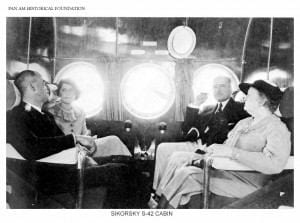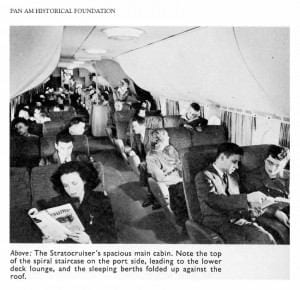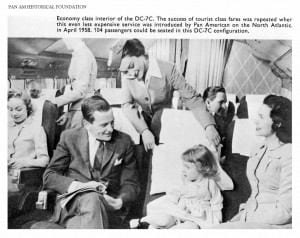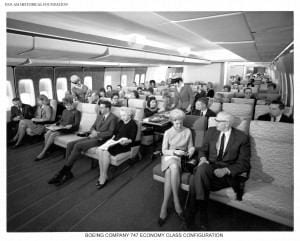Airplanes weren’t always the cramped, crowded experiences that they are today. There’s a reason it was once called the golden age of air travel: passengers dressed up for the occasion, families gathered at the gate to bid their goodbyes, the booze was flowing, and the flight attendants…well, let’s just say it was a different time. Granted, flying was also incredibly expensive and awfully smoky, and there was no in-flight entertainment whatsoever. But when you see how comfortable those seats were on these Pan Am planes, you might find yourself longing for the old days.
American immigrant Igor Sikorsky established Sikorsky Aircraft in 1925. The company still develops aviation products today, but back then they made the S-42, a 1930s commercial flying boat. Known as the “Flying Clipper” or “Pan Am Clipper,” it carried a mere 37 passengers and was divided into four passenger cabins, measuring 76 inches by 110 inches each. Passengers and packages entered through a main entrance that measured 25 by 72 inches. Between the front and rear baggage compartments, the plane had four passenger cabins and lavatories. Comfort also came in the form of a high head rest, tubular racks suspended from the bulkheads that supported the seats, and floor to ceiling distance that measured over six feet. This model established eight world records for carrying weight during its service with Pan American World Airways.
Stratocruiser, the civilian airliner version of the C-97 Stratofreighter, first flew the skies with Pan American World Airways in 1949, flying between San Francisco and Honolulu. This craft accommodated between 55 and 100 passengers on 28 sleeping berths and five seats. All versions of the aircraft featured a lower-deck lounge and bar. The airplane was designed for comfort, speed, and distance. The Stratocruiser gave passengers a sense of roominess thanks to the added space to stretch out, relax, and walk around the 660 cubic feet of interior space.
The Douglas Aircraft Company was an American aerospace manufacturer based in Southern California and founded in 1921 by Donald Wills Douglas, Sr. The company produced both civilian and military aircraft. The DC-7, introduced in May 1953, was the last stretch of the Douglas famous DC-4/7 series. This DC-7 marked an important step forward—both operationally and commercially—by allowing a nonstop North Atlantic range. In 1967, Douglas merged with McDonnell Aircraft Corporation, funding McDonnell Douglas until it was purchased by Boeing in 1997. The aircraft provided accommodations for up to 105 passengers.
This aircraft—manufactured by Boeing’s Commercial Airplane unit in the United States—marked a significant increase in the air transportation industry, allowing more flights with large-thrust engines. The first model, the 747-100, entered commercial service in 1970. Initially, Boeing built two versions of the 747-100 passenger airplane. One had a higher payload capacity, and the other was a short-range plane with a modified body structure to accommodate a greater number of takeoffs and landings. This model was used by airlines on short flights with a passenger capacity of 550.
For more about Pan Am planes, visit:
- The Travel Detective on Pan Am: Was it Travel’s Glory Days?
- How to Make a 747 House From a Pan Am Airplane
By Lavinia Pisani for PeterGreenberg.com. Photos courtesy of the Pan Am Historical Foundation.
















